The 10 Healthiest Beans and Other Legumes
As every health and nutrition nut will
know, beans and other legumes are a must-have in everyone’s diet because
they are extremely rich in fiber and packed with plant proteins,
essential micronutrients and vitamins. And while that is certainly true
of all legumes, it disregards the fact that each variety, be it lentils,
chickpeas, soya beans or kidney beans, has its unique properties,
benefits, and uses. Let’s take a closer look at 10 of the healthiest and
most widely accessible legumes (in no particular order) and find out
which ones are best suited for you.
Why Should You Eat Legumes?


Apart from having an excellent nutrient
profile, legumes are also known for their ability to boost
cardiovascular health, help stabilize blood sugar levels and other
noteworthy health benefits we have previously covered in the article 9
Amazing Health Benefits of Beans. Legumes are especially beneficial if
you’re a vegetarian or vegan, or if you’re simply trying to cut down on
your consumption of meat, as they will be able to supply you with the B
vitamins and proteins that are otherwise difficult to get from
plant-based foods.
1. Chickpeas
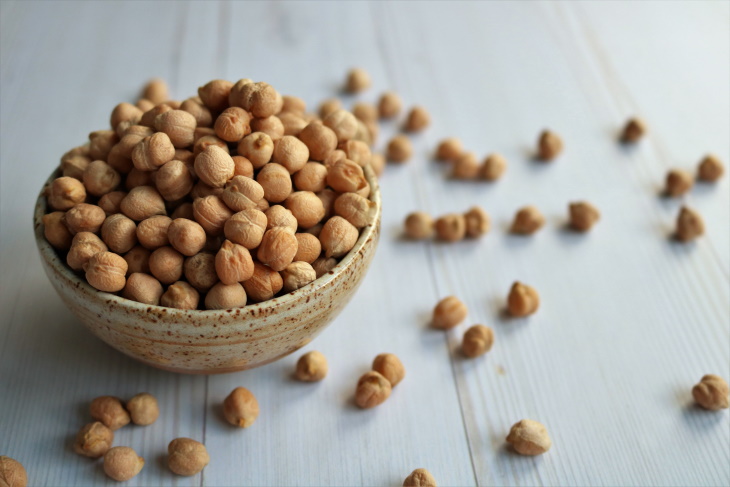

Nutrients in 1 cup (164 grams) of Cooked
Chickpeas:
Calories: 269
Fiber: 12.5 g
Protein: 14.5 g
Fats: 7.8 g
Carbohydrates: 38 g
Vitamin B9 (folate): 71% of the Reference Daily Intake (RDI)
Copper: 29% of the RDI
Iron: 26% of the RDI
Chickpeas, also known as garbanzo beans, are very versatile, as they can
be included in curries and stews, baked with spices to yield a healthy
savory snack, or used to prepare hummus. However, their versatility is
far from being their only virtue, as chickpeas have a whole host of
health benefits as well.
For one, chickpeas have been proven to be beneficial for reducing blood
sugar levels and reducing insulin resistance, and can also improve your
digestion by reducing the number of harmful gut bacteria. Finally,
garbanzo beans may have cholesterol normalizing properties, therefore
reducing one's risk of cardiovascular issues.
2. Black Beans
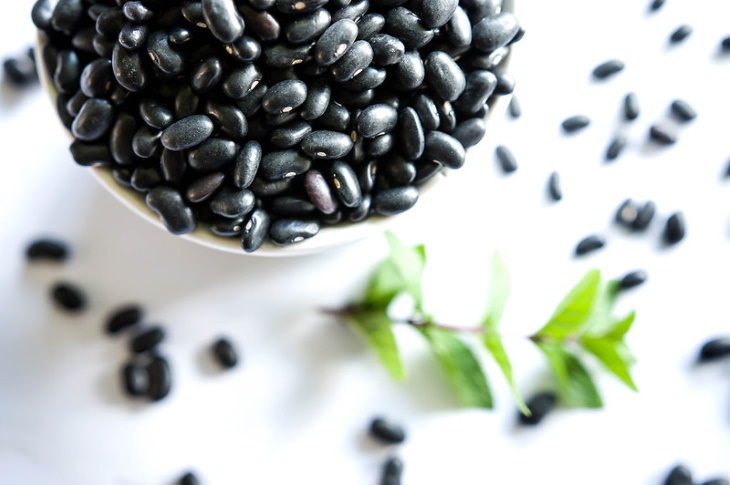
Nutrients in 1 cup (172 grams) of Cooked
Black Beans:
Calories: 227
Fiber: 15 g
Protein: 15.2 g
Fats: 0.9 g
Carbohydrates: 40 g
Vitamin B1 (thiamine): 28% of the RDI
Vitamin B9: 64% of the RDI
Manganese: 38% of the RDI
Magnesium: 30% of the RDI
Iron: 20% of the RDI
Black beans and rice are a staple food in many countries, and it turns
out that eating rice with the beans actually makes you healthier. This
is because beans are high in protein and fiber, which means that they
are somewhat slower to digest. When eaten with rice, which is higher on
the glycemic index, and so is more likely to cause sugar spikes, the
beans slow down the absorption of the sugar from the rice into the
blood, yielding in an overall steadier blood sugar level. That's why
black beans are great at protecting you from metabolic syndrome,
diabetes, and even obesity.
3. Peas
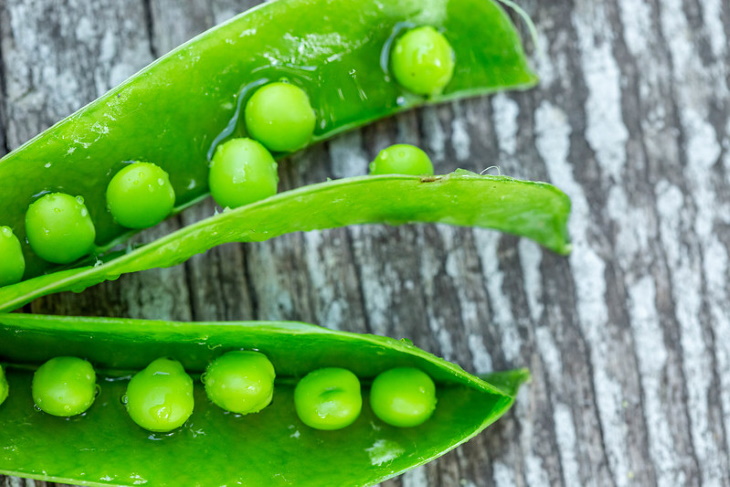


Nutrients in 1 cup (160 grams) of Cooked
Peas:
Calories: 125
Fiber: 8.8 g
Protein: 8.2 g
Fats: 3.2 g
Carbohydrates: 11 g
Vitamin B1: 30% of the RDI
Vitamin B9: 24% of the RDI
Vitamin K: 48% of the RDI
Manganese: 22% of the RDI
Peas come in different varieties, but they're all an excellent
low-calorie source of fiber and protein, which makes them pretty good
for weight loss. Apart from that, eating peas promotes the growth of
beneficial gut bacteria, particularly Lactobacilli and Bifidobacteria,
so they're pretty effective at boosting gut health.
Pea flour may also be an excellent substitution for wheat flour for
those at risk of the development of metabolic syndrome and type 2
diabetes, as suggested in recent research.
4. Lentils

Nutrients in 1 cup (198 grams) of Cooked
Lentils:
Calories: 230
Fiber: 15.6 g
Protein: 17.9 g
Fats: 0.8 g
Carbohydrates: 39.9 g
Vitamin B1: 22% of the RDI
Vitamin B6: 18% of the RDI
Vitamin B9: 90% of the RDI
Copper: 25% of the RDI
Iron: 37% of the RDI
Phosphorous: 36% of the RDI
Potassium: 21% of the RDI
Manganese: 49% of the RDI
As you can see by yourself, lentils have a really impressive
nutritional profile, containing not only tons of fiber and protein, but
also impressive quantities of B vitamins, iron, and other minerals. Th
is
is why lentils are an excellent addition to a diet low or free of
animal products.
It needs to be mentioned that there are several varieties of lentils,
with each type having a slightly different, but similar nutrition
profile. Red and black lentils are typically used in soups, whereas
green or brown ones can be eaten as a side dish, combined with sauces
and pasta for a quick evening pasta dish, or mixed with veggies and
turned into a hearty stew.
Lentils are known for their various health benefits, particularly for
their ability to improve digestion and bowel function. Studies also
suggest that lentils help reduce blood sugar spikes by promoting a
slower and more steady absorption of sugar in the blood, so they may be
beneficial for diabetes prevention as well.
5. Kidney Beans


Nutrients in 1 cup (256 grams) of Cooked
Kidney Beans:
Calories: 215
Fiber: 13.6 g
Protein: 13.4 g
Fats: 0.8 g
Carbohydrates: 38.6 g
Vitamin B1: 20% of the RDI
Vitamin B9: 23% of the RDI
Copper: 17% of the RDI
Iron: 17% of the RDI
Manganese: 22% of the RDI
Though kidney beans don't have the most impressive vitamin and mineral
profile, they have been proven to be good for promoting weight loss and
preventing sugar spikes when you're eating high glycemic foods like
rice or white bread. On a similar note, kidney beans may benefit weight
loss in general. In one weight loss study, patients who took white
kidney bean extract for 1 month lost 2.5 kg (5.5 lbs) more on average
than the controls who took a placebo.
6. Navy Beans
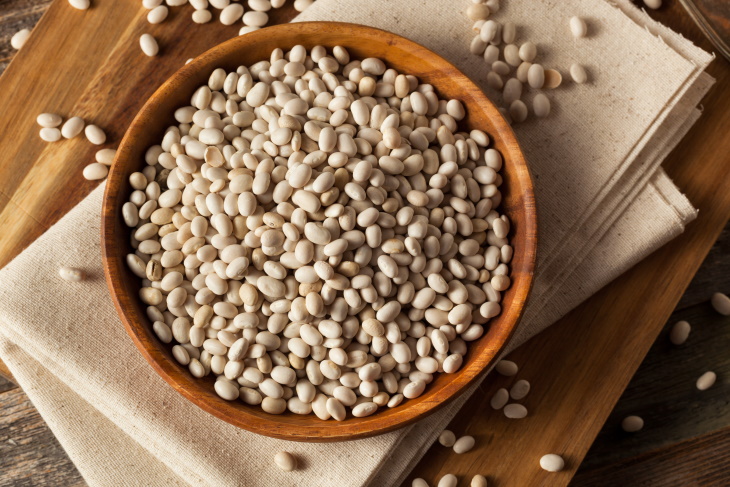

Nutrients in 1 cup (182 grams) of Cooked
Navy Beans:
Calories: 255
Fiber: 19 g
Protein: 15 g
Fats: 1.1 g
Carbohydrates: 47 g
Vitamin B1: 29% of the RDI
Vitamin B9: 64% of the RDI
Manganese: 48% of the RDI
Magnesium: 24% of the RDI
Iron: 24% of the RDI
Navy beans, also known as haricot beans, are another staple food,
especially in the navy kitchens of the United States, and for good
reason, as they're among the best plant sources of B vitamins, as well
as fiber and protein, like all legumes. Capable of lowering cholesterol
levels and promoting healthy digestion makes navy beans, similarly to
most beans, a great choice for people at risk of metabolic syndrome or
obesity.
7. Adzuki Beans


Nutrients in 1 cup (197 grams) of Cooked
Adzuki Beans:
Calories: 250
Fiber: 15 g
Protein: 15 g
Fats: 1 g
Carbohydrates: 48 g
Vitamin B9: 30% of the RDI
Manganese: 29% of the DV
Phosphorus: 17% of the DV
Potassium: 15% of the DV
Who said beans have to be savory? These little red beans that
originated from the Himalayas prove that beans can be used in desserts
as well. It is adzuki beans, also known as red mung beans that are the
main ingredient in many popular Asian desserts, such as cake filling and
ice cream. If you have a sweet tooth, try using adzuki beans in your
desserts, as they have all the incredible insulin-lowering, digestion
promoting and weight loss benefits of all legumes, but can be used to
prepare delicious desserts.
8. Pinto Beans
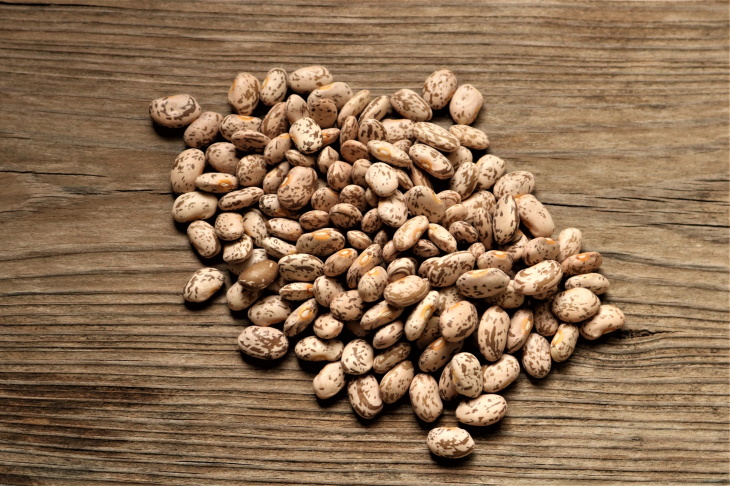

Nutrients in 1 cup (171 grams) of Cooked
Pinto Beans:
Calories: 245
Fiber: 15.4 g
Protein: 15.4 g
Fats: 1 g
Carbohydrates: 45 g
Vitamin B1: 22% of the RDI
Vitamin B9: 74% of the RDI
Copper: 29% of the RDI
Manganese: 39% of the RDI
Pinto beans are a popular bean variety grown worldwide, but especially
loved in Mexico, where they're eaten whole, as well as mashed and
subsequently fried up. These beans have all the health benefits of other
beans we've mentioned on this list and then some. More specifically,
they have proven LDL cholesterol-lowering capabilities, so they benefit
heart health. Eating these beans also raises the levels of propionate in
your gut, which is a type of fatty acid produced by gut bacteria that
is associated with digestive health.
9. Mung Beans
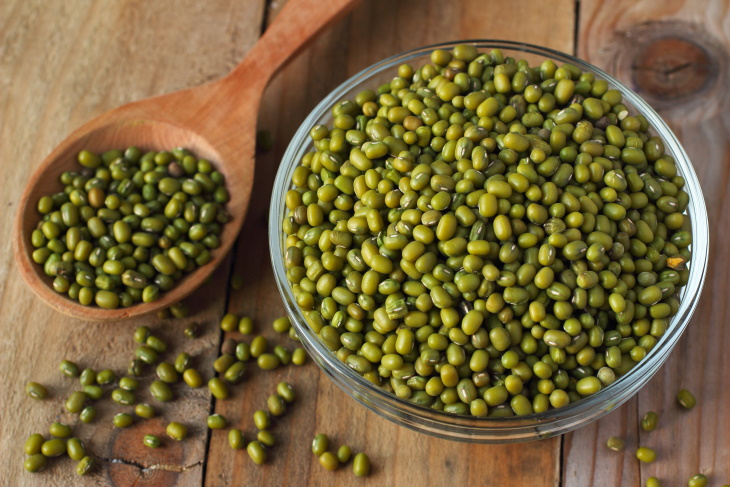

Nutrients in 1 cup (202 grams) of Cooked
Mung Beans:
Calories: 212
Fiber: 15.4 g
Protein: 14.2 g
Fats: 0.8 g
Carbohydrates: 38.7 g
Vitamin B1: 22% of the RDI
Vitamin B9: 80% of the RDI
Copper: 16% of the RDI
Iron: 16% of the RDI
Manganese: 30% of the RDI
Magnesium: 24% of the RDI
Compared to all other legumes, mung beans have the highest vitamin
density, providing a whopping 80% of your recommended daily intake of
vitamin B9. These beans are native to India, but they are the most
popular in China, where they're used as an ingredient in stir-frys,
soups, salads, and other dishes. Like most legumes, mung beans have the
potential of aiding weight loss, preventing blood sugar spikes and
benefiting heart health. These beans also contain a ton of antioxidants,
which can help reduce inflammation and help prevent chronic illnesses
and possibly even cancer.
10. Soya Beans


Nutrients in 1 cup (172 grams) of Cooked
Soya Beans:
Calories: 298
Fiber: 10.3 g
Protein: 28.6 g
Fats: 7.8 g
Carbohydrates: 16 g
Vitamin B2 (riboflavin): 29% of the RDI
Vitamin B9: 23% of the RDI
Vitamin K: 41% of the RDI
Copper: 29% of the RDI
Manganese: 71% of the RDI
Iron: 49% of the RDI
Phosphorus: 42% of the RDI
Didn't expect to see soy on this list? It's not surprising, as soya
beans and products derived from them sometimes have a bad reputation,
and undeservedly so, as these legumes are among the healthiest and most
well-researched ones, apart from also being the cheapest as well. We
discuss this stigma in the article we linked above.
You already know that soy products are very versatile, and most dairy
replacements, such as nondairy milks, cheese, and tofu is made of
processed soya beans, as is soy sauce. However, few people know that
soya beans offer all the beneficial effects of other legumes with the
added benefit of improving fertility in women, protecting from breast
cancer and reducing menopause symptoms, making it an excellent choice
for women of all ages.